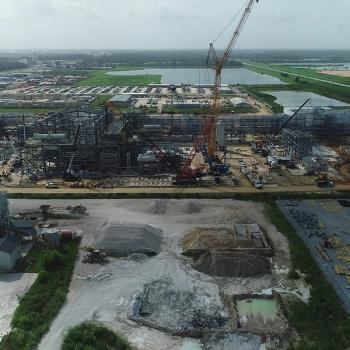
Rolls-Royce Supplies MT30 Gas Turbine System for Japanese Destroyer
The MT30 is a power-dense marine gas turbine that has a small footprint but generates a lot of power for propulsion applications.
The Japan Maritime Self-Defense Force (JMSDF) has selected Rolls-Royce to supply a twin MT30-powered hybrid electro-mechanical propulsion system for an under-development destroyer program—the Aegis System Equipped Vessel (ASEV). The MT30 gas turbine provides top ship speed requirements, high power density, and low onboard maintenance to facilitate crew reductions in the engineering department. Kawasaki Heavy Industries will build, assemble, and test the MT30 in a compact package engine enclosure and conduct testing on the entire propulsion system.
“Having previously been selected to power the JMSDF fleet, we’re delighted that the MT30 has once again been chosen to power the country’s vessels further reinforcing our long and successful history with Japan,” said Sam Cameron, SVP of Defense at Rolls-Royce. “Rolls-Royce continues to be at the forefront of naval propulsion technology and we’re proud to be providing the world’s first twin-MT30 hybrid arrangement to power Japan’s destroyer program.”
The MT30 generates a significant amount of power in a compact footprint and is currently operating or selected for all propulsion arrangements—mechanical, hybrid, and integrated-electric. Depending on the application, the gas turbine delivers power to water jets, controllable propellers, and fixed-pitch propellers. Within the Pacific Rim region, Rolls-Royce supplied the MT30 for South Korea’s Daegu- and Ulsan-class frigates and Australia’s Hunter-class frigates.
“MT30 is powering many of the world’s most advanced platforms – including the FFM frigate program - due to its power and propulsion providing ship builders and system designers with new options, choices, and the ability to futureproof,” Cameron added. “We look forward to continuing to build on our relationship with Japan and grow the footprint of the MT30 globally.”
Seatrium Ltd.’s 65-ton bollard pull tug,
“We are proud that we were able to contribute to Seatrium’s innovative project with our gas engines. The workboat market is one of our strategic business areas,” said Chew Xiang Yu, Head of Rolls-Royce Power Systems' Civil Marine business in Asia. “The mtu engines were selected because they meet the demanding requirements of harbor tug operations - in terms of reliability, ease of operation, dynamic engine behavior and low emissions.”
The hybrid propulsion system is suited for the load profile of Seatrium’s harbor tug, as it allows precise maneuvering and a strong bollard pull during full-power operation. Maximum thrust is enabled by the total power of two azimuth stern thrusters at 4,000 kW. The mtu gas engines each provide 1,492 kW and each shaft contains an electric motor with 500 kW of power—JMS Sunshine is also equipped with a battery capacity of 904 KWh. This battery power is used to absorb peak loads during acceleration, for example, and to electrically maneuver in port and supply the ship with electricity on board.
Newsletter
Power your knowledge with the latest in turbine technology, engineering advances, and energy solutions—subscribe to Turbomachinery International today.




